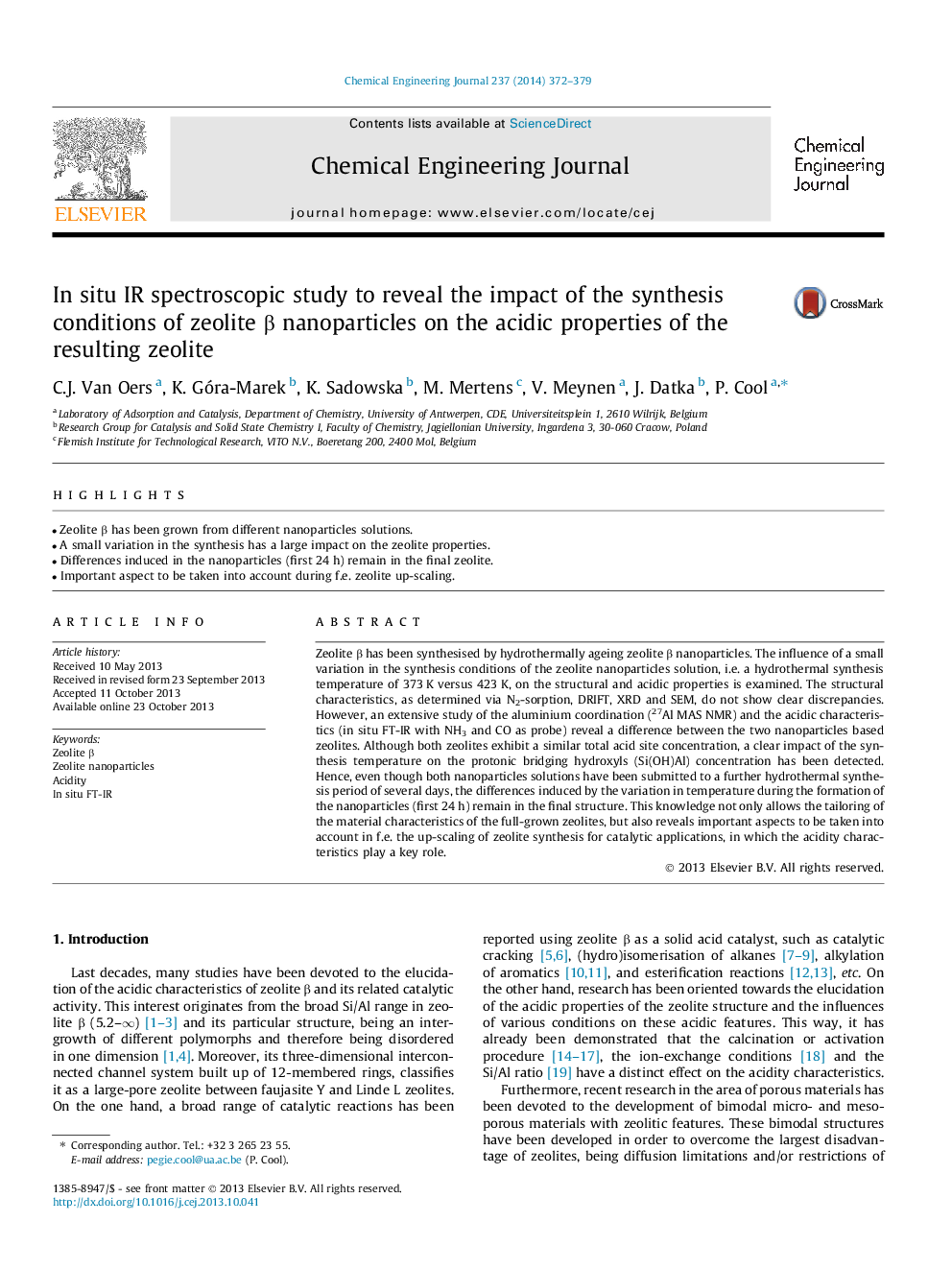| Article ID | Journal | Published Year | Pages | File Type |
|---|---|---|---|---|
| 148241 | Chemical Engineering Journal | 2014 | 8 Pages |
•Zeolite β has been grown from different nanoparticles solutions.•A small variation in the synthesis has a large impact on the zeolite properties.•Differences induced in the nanoparticles (first 24 h) remain in the final zeolite.•Important aspect to be taken into account during f.e. zeolite up-scaling.
Zeolite β has been synthesised by hydrothermally ageing zeolite β nanoparticles. The influence of a small variation in the synthesis conditions of the zeolite nanoparticles solution, i.e. a hydrothermal synthesis temperature of 373 K versus 423 K, on the structural and acidic properties is examined. The structural characteristics, as determined via N2-sorption, DRIFT, XRD and SEM, do not show clear discrepancies. However, an extensive study of the aluminium coordination (27Al MAS NMR) and the acidic characteristics (in situ FT-IR with NH3 and CO as probe) reveal a difference between the two nanoparticles based zeolites. Although both zeolites exhibit a similar total acid site concentration, a clear impact of the synthesis temperature on the protonic bridging hydroxyls (Si(OH)Al) concentration has been detected. Hence, even though both nanoparticles solutions have been submitted to a further hydrothermal synthesis period of several days, the differences induced by the variation in temperature during the formation of the nanoparticles (first 24 h) remain in the final structure. This knowledge not only allows the tailoring of the material characteristics of the full-grown zeolites, but also reveals important aspects to be taken into account in f.e. the up-scaling of zeolite synthesis for catalytic applications, in which the acidity characteristics play a key role.
